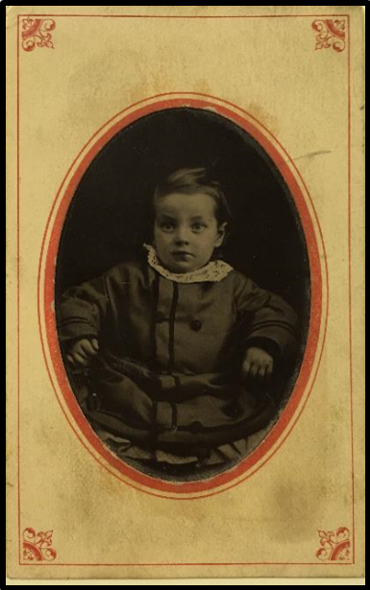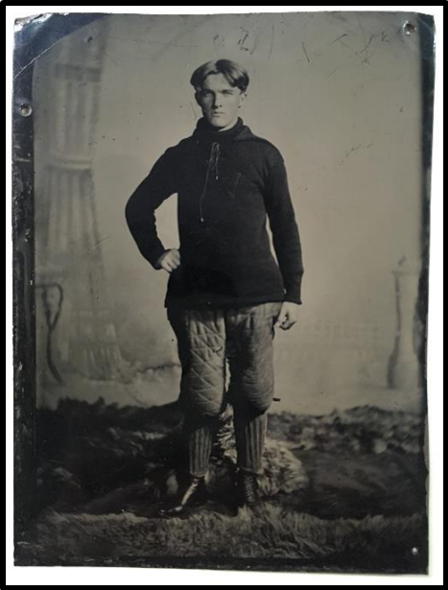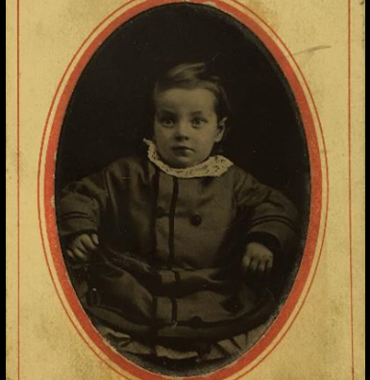
CMC Blog
Early Photography Series 3 of 4 – Tintypes
By: James DaMico, Curator of Audiovisual Collections
A tintype is a wet-collodion process, same as the ambrotype, with the emulsion applied by hand, but on a dark lacquered iron plate instead of glass. The lacquer forms the dark background required to reveal the positive image. Tintypes are often coated with a protective varnish.

Portrait of John Jacob Amman (SC#19. B1. F6)

Portrait of William R. Bass, 1899 (SC#19. B1.F1.)
Here we have two tintypes. On the left is a seated, waist up portrait of John Jacob Amman as an infant. On the right is a full length portrait of William R. Bass taken in 1899.
Tintypes were less expensive, more durable and easier to produce than ambrotypes. Often used by itinerant photographers, tintypes were the closest approximation to instant photography in the 19th century. Tintypes first appeared in the United States in 1856 and remained popular well into the 20th century. Along with the Carte de Visite, the tintype was wildly popular during the Civil War as they were cheap to buy and easy to transport and mail to loved ones.
The Photography Department of Cincinnati Museum Center holds about 1 million photographic prints, negatives, slides, glass plate negatives, and cased images such as daguerreotypes.
Museum Admission
Includes Cincinnati History Museum, Museum of Natural History & Science and The Children's Museum
| Adult: | $22.50 |
| Senior: | $15.50 |
| Child: | $15.50 |
| Member Adult: |
FREE |
| Member Child: |
FREE |
Members receive discounts!
Become a Member today to save on programs, exhibits and films throughout CMC.
Museum Hours
Open Thursday – Monday
10 a.m. to 5 p.m.
Closed Tuesday and Wednesday
Closed Thanksgiving Day and Christmas Day
Member’s-only early entry: Saturdays at 9 a.m.
Customer Service Hours:
Monday – Sunday, 9 a.m. to 5 p.m.

